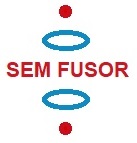
A new idea to obtain clean fusion energy
Home Introduction Calculations Videos Facebook Contact Sitemap
12 Confinement of positive ions and electrons with a static electromagnetic field
 Applying
a reversed magnetic bottle
Applying
a reversed magnetic bottle
| A magnetic bottle has already been simulated
in:
Droom11.9.html The idea was that it could help to confine the particles in the vertical direction. But could we do something with the magnetic field to help confine the particles more in the centre? Letīs reverse the magnetic bottle, making the
diameter of the middle current-carrying ring smaller and
|
|
Experiment 12.1 Fig.1
Fig.2 . The image is augmented and the magnetic field direction and strength are visible.
The particles seem to be somewhat
focused in the centre. If this is true, it could be an advantage,
because it would increase the Fig.3 The upper and down current-carrying rings have been moved towards the centre.
Fig.4. A slightly different configuration.
Fig.5. Two charged rings with -150 kV and a bit stronger magnetic field..
Due to the configuration of the current-carying rings the magnetic field
is curved.
Fig.6. The same as in fig.5, but the outer
current-carrying rings have been moved a bit towards the centre,
The D+ ions reach a maximum vertical speed of about 1,5.106 m/s (see screenshot).
Fig.7. The same , but with the magnetic field
even more curved.
The diameter of the middle current-carrying ring is
quite small, and this should be difficult to realize. Fig.8a. Another configuration.
Fig.8b. The same as fig. 8a
It seems to be that some particles get trapped, more or less, in the
area between the red spheres and the outer blue rings.
Hypothesis: A lot of investigation and experiments can be done.... Fig. 9. Area between a red sphere and a blue ring with a curved magnetic field.
---- How much is a current of 105 ampere? See also Droom11.4.html Electrical cable in Bricodepot.es: 2,5 mm2 -> 0,22 € / m According Engineeringtoolbox.com the maximum current of such a cable is about 20 A. -> 105 = N. 20 -> N = 5000 turns Diameter of a turn = 60 cm -> circumference = 2π.0,3 = 1,89 m -> total length = 5000 . 1,89 m = 9450 m - > price = 2079 . Fig. 3. If we take into account the insulation material around the cable (thickness of it is aproximated) and suppose the area of the cross section is then 3,5 mm2, then we can make over 1 meter length 1 layer with 455 turns. To get 5000 turns, we need about 11 layers. The thickness of all layers would be around: 2,4 cm. For copper the resistivity ρ = R . A/l = 1,68 . 10-8 ohm meter (R = electrical resistance, l = length, A = cross-sectional area) Diameter vacuum chamber = 50 cm, diameter coils = about 60 cm R = ρ . l / A = 1,68 . 10-8 . 5000 . 2. π . 0,30 / ( 2,5 . 10-6 ) = 63 ohm Electrical power generated = I2 . R = 202 . 63 = 25,2 kW (about 25 electrical heaters of 1000 W) In the experiment of
fig. 8 we have three rings with each carrying 3.105
ampere. Better use superconducting magnets...
|
|
|
|
|